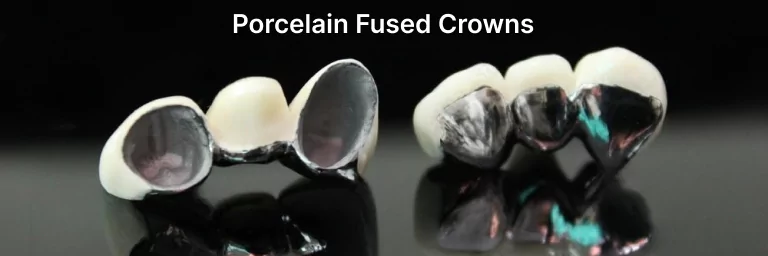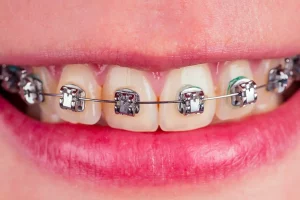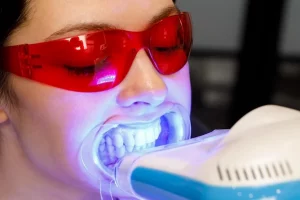Choosing a suitable dental crown is an essential step in restoring your smile and preserving your oral health. Porcelain and zirconia crowns are among the best prospects due to their distinct features and advantages. Each material has inherent benefits that address various aesthetic and practical requirements. Understanding the differences between porcelain crown vs zirconia crown is critical, whether you’re looking for increased longevity, improved looks, or a combination of both. This blog looks into the differences of each kind, allowing you to make an informed and confident decision about your dental restoration.
What is a Porcelain Crown?
Porcelain crowns are a popular alternative for dental restorations because they seem natural. These crowns are made of high-quality ceramic materials that closely imitate the color and clarity of natural teeth. Porcelain crowns are commonly used for front tooth restorations because they mix in with the surrounding teeth.

Benefits of Porcelain Crowns:
Aesthetic Appeal: Porcelain replicates the natural appearance of enamel, making it perfect for visible teeth.
Biocompatibility: Porcelain is soft on the gums, causing less inflammation.
Customization: Highly customizable in terms of form and color, ensuring an exact fit with your existing teeth.
What is a Zirconia Crown?
Zirconia crowns are made of zirconium dioxide, a ceramic that is extremely hard and durable. Zirconia crowns can sustain higher pressure than porcelain crowns, giving them a superior option for molars or places with immense biting strength.

Benefits of Zirconia Crowns:
Strength: Zirconia is one of the most durable dental materials available, resistant to chipping and breaking.
Longevity: Zirconia crowns are more durable than porcelain crowns and often last longer.
Less Tooth Removal: Zirconia crowns need minimal removal of native tooth structure during preparation.
Key Differences Between Porcelain and Zirconia Crowns
1) Durability:
Porcelain: While porcelain is durable, it is more prone to chipping or breaking, particularly in regions with significant biting force.
Zirconia: Highly sturdy and damage-resistant, making it suitable for back teeth.
2) Aesthetics:
Porcelain: Its ability to resemble natural tooth enamel provides exceptional aesthetics, particularly for front teeth.
Zirconia: While slightly less natural-looking than porcelain, modern zirconia crowns have improved in appearance.
3) Tooth Preparation:
Porcelain: It requires removing a more number of natural teeth to achieve a precise fit for the crown.
Zirconia: Reduces the amount of natural tooth removed, maintaining a higher percentage of the original structure.
4) Translucency:
Porcelain: Porcelain crowns are highly transparent, virtually matching the natural appearance of enamel. This feature makes them ideal for front teeth, where a natural appearance is essential.
Zirconia: Zirconia crowns, particularly older generations, are less transparent and seem slightly more opaque. However, modern zirconia crowns (such as layered zirconia) have more clarity, making them more appealing for visible teeth.
5) Allergic Reactions and Biocompatibility:
Porcelain: Porcelain is very biocompatible and generates little allergy responses. It is a good choice for those who are sensitive to metals or other things.
Zirconia: Zirconia is also biocompatible and poses a low risk of allergic responses. It is a metal-free alternative suitable for those with metal allergies.
6) Stain Resistance:
Porcelain: Porcelain crowns are stain-resistant, but they can still become stained over time, especially if exposed to certain foods, beverages, or smoking.
Zirconia: Zirconia crowns are exceptionally stain-resistant and retain their natural color for extended periods. This makes them a good option for those who often drink staining chemicals.
7) Cost:
Porcelain: Porcelain crowns are often less expensive than zirconia crowns. However, this might vary depending on the kind of porcelain used and the intricacy of the treatment.
Zirconia: Zirconia crowns are often more expensive because of the complex materials and technology required to manufacture them. However, its resilience and lifespan may justify the increased initial cost.
8) Customization and Shading:
Porcelain: Porcelain provides great customizing choices in terms of shade and hue, allowing dentists to match the crown to the adjacent teeth closely. This makes porcelain suitable for those who want an exact color match.
Zirconia: While zirconia crowns may be colored to mimic natural teeth, they may not be as customizable as porcelain. However, developments in zirconia technology are narrowing the gap.
9) Placement Time:
Porcelain: Porcelain crown placement may take longer since it requires numerous visits to provide a flawless fit and look. Some porcelain crowns may require extra modifications after insertion.
Zirconia: Zirconia crowns may typically be created and installed more rapidly, often in a single visit, because of CAD/CAM technology. This can be a significant benefit for people who want a quicker treatment.
10) Flexural Strength:
Porcelain: Porcelain has a lower flexural strength than zirconia, which means it can tolerate less bending pressures before breaking. This renders it unsuitable for high-stress environments.
Zirconia: Zirconia has a high flexural strength, which allows it to withstand significant stress without shattering. This feature makes it perfect for crowns on molars and other load-bearing teeth.
Which is Better: Porcelain or Zirconia?
The decision between porcelain and zirconia dental crowns is based on your individual dental needs and preferences. If looks are your primary priority, particularly for front teeth, porcelain may be a better choice. However, if you require a crown for a molar or a region with strong biting pressure, zirconia is the best option due to its strength and longevity.

Conclusion:
When selecting between porcelain and zirconia crowns, it is essential to examine your unique needs and preferences. Each substance provides specific benefits that appeal to various dental conditions. By talking with your dentist and learning the qualities of each choice, you can make an informed selection that will improve both the durability and beauty of your smile. With the appropriate option, you’ll have a restoration that improves both your oral health and look.





